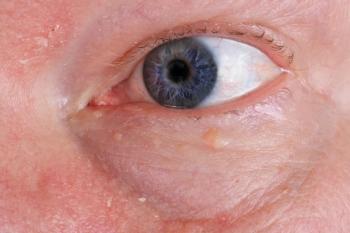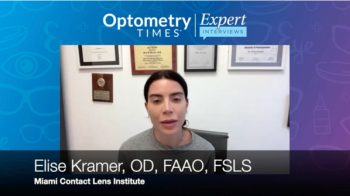
AOA 2025: Optometry and visual impairment in Latin America
Carlos Chacon, OD, MSc, FIACLE, cited economic and geographic barriers and nonstandardized education as the major barriers keeping patients from adequate eye care in Latin America.
Amid a vision crisis, Latin America is in a position that warrants a serious commitment to a call to action for standardizing and improving eye care across the region, according to Carlos Chacon, OD, MSc, FIACLE. In his Optometry’s Meeting 2025 presentation titled “Optometry and Visual Impairment in Latin America: A Call to Action,” Chacon cited that geographic and economic barriers for patients, along with optometric education disparities and restricted diagnostic rights, put a burden on the health care system in the form of preventable conditions going untreated.1
Currently, 26.6 million people in Latin America are visually impaired, with 80% of those cases identified as preventable if the patient were treated with proper care. In the Andean region alone, nearly 21 million – or 1 in 8 people – experience vision loss. Over 75% of these cases could be prevented or treated with proper care. This number of cases of visual impairment contributes to $3.2 billion economic impact in the form of annual productivity loss in Latin America.2
Additionally, those in rural and urban areas have different access to eye care. With 8.5 ophthalmologists available per 100,000 people in urban areas in comparison with 1.3 ophthalmologists available in rural areas in Latin American countries, rural areas generally lack infrastructure, specialists, and transportation options for patients.3 The cost of quality eyeglasses, specialist consultation, and cataract surgery also keeps patients from receiving the care they need. Chacon said that only those in Latin America with the highest income receive full access to preventive and specialized care. Middle-income patients receive basic care with limited specialty services, lower-income patients have only emergency services accessible to them, and poverty-level patients have virtually no access to eye care services.
Chacon stated that one of the major barriers to eye care for patients in Latin America is the lack of an optometric workforce. There are only 2.5 optometrists per 100,000 patients, compared to a 16.5 per 100,000 patient ratio in developed nations.2 He noted that a project in Ecuador 10 years ago had allocated millions of USD to aid in performing eye examinations in an effort to correct refractive errors.
“The problem at that time and today is the same problem: that they don’t have the workforce to do the examination because, as the primary eye care, they don’t have optometrists,” Chacon said. “They could [allocate] the money, but they don’t have the optometrists.”
Barriers that keep the pool of practicing optometrists from growing include educational disparities across Latin America. Puerto Rico and Colombia are the only countries in the region with universities offering doctorate programs for optometrists. Those pursuing the eye care profession can receive either a bachelor’s degree or a technician’s degree. In Ecuador, both degrees afford the same scope of practice but require different academic hours, with a bachelor’s requiring 5200 to 7400 and a technician’s requiring 2000 to 3200.4 Diagnostic limitations, difficulty with advanced technologies, and variability in quality of care are the result of training that is not standardized.
Much like the rest of the world, Latin America’s vision impairment rates are mainly caused by uncorrected refractive errors and cataracts. The World Health Organization (WHO) Vision 2030 Strategic Framework’s global goal is a 40% increase in refractive error coverage by 2030, a goal that Chacon finds lofty for the region. The WHO World Report on Vision from 2019 cites the next steps for Latin American as a 30% access to care improvement, a 40% avoidable impairment improvement for cases preventable through optometric care, and a regional collaboration potential including more than 20 countries.5
“Those are the numbers that we have to work with in Latin America, and in the next years, we can do our best to improve the level of optometry and for the government to accept us as primary care and get to that number in 2030, but I’m not sure that we are going to get that,” Chacon said.
References:
Chacon C. Optometry and Visual Impairment in Latin America: A Call to Action. Presented at: Optometry’s Meeting 2025; June 25-28, 2025; Minneapolis, MN.
World Health Organization Global Data on Visual Impairments. World Health Organization. 2020. Accessed July 8, 2025.
Hong H, Mújica OJ, Anaya J, Lansingh VC, López, Silva JC. The challenge of universal eye health in Latin America: Distributive inequality of ophthalmologists in 14 countries. BMJ Open. 2016;6(11). doi:10.1136/bmjopen-2016-012819
Optometria. Federación de Optometristas del Ecuador. Accessed July 8, 2025.
https://fedopte.com/#:~:text=La%20Federaci%C3%B3n%20de%20Optometristas%20del,ocular%20de%20la%20poblaci%C3%B3n%20ecuatoriana .WHO Vision 2030 Strategic Framework. World Health Organization. Accessed July 8, 2025.
Newsletter
Want more insights like this? Subscribe to Optometry Times and get clinical pearls and practice tips delivered straight to your inbox.













































